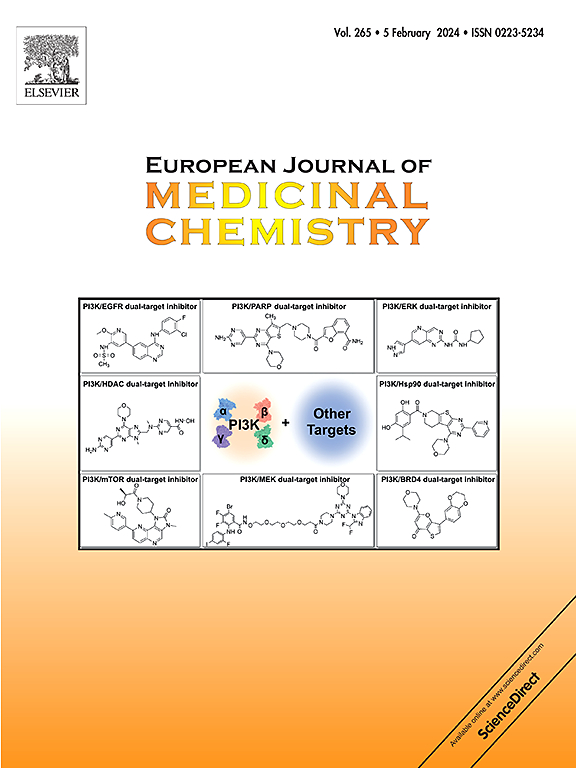A novel liver-targeted and highly selective fluorescent probe for hepatic hydrogen sulfide detection in the diagnosis of drug-induced liver injury
IF 6
2区 医学
Q1 CHEMISTRY, MEDICINAL
引用次数: 0
Abstract
Drug-induced liver injury (DILI) has emerged as a significant health risk, yet reliable methods of detection at an early stage are in urgent need. Recent researches have highlighted the crucial role of hydrogen sulfide (H2S) in various pathological and physiological processes, with a correlation between its levels and the severity of DILI. We developed a novel fluorescent probe H2S-YL for the precise detection of liver H2S fluctuations in DILI, and the liver in situ accumulation capacity of H2S-YL has been significantly enhanced by incorporating a liver-targeting cholic acid moiety into its skeleton. Furthermore, H2S-YL displays exceptional selectivity, good sensitivity and responds rapidly toward H2S within 3 min, thereby enabling precise detection of subtle hepatic H2S fluctuations capability essential for accurately assessing the severity of DILI. Subsequently, H2S-YL was employed to assess the hepatoprotective effects of natural constituents derived from traditional Chinese medicine, via monitoring H2S levels both in cells and in vivo. These results demonstrate that H2S-YL serves as a powerful tool for visualizing pathological hepatic H2S fluctuations, thereby enabling the assessment of DILI severity and the efficacy of hepatoprotective natural constituents.


一种新型肝脏靶向性高选择性荧光探针用于肝脏硫化氢检测诊断药物性肝损伤
药物性肝损伤(DILI)已成为一种重大的健康风险,但迫切需要可靠的早期检测方法。最近的研究强调了硫化氢(H2S)在各种病理和生理过程中的重要作用,其水平与DILI的严重程度之间存在相关性。我们开发了一种新的荧光探针H2S- yl,用于精确检测DILI中肝脏H2S的波动,并且通过在其骨架中加入肝脏靶向胆酸片段,H2S- yl的肝脏原位蓄积能力显著增强。此外,H2S- yl表现出优异的选择性和良好的灵敏度,并在3分钟内对H2S做出快速反应,从而能够精确检测肝脏细微H2S波动,这对于准确评估DILI的严重程度至关重要。随后,通过监测细胞和体内H2S水平,利用H2S- yl来评估来自中药的天然成分对肝脏的保护作用。这些结果表明,H2S- yl是观察病理肝脏H2S波动的有力工具,从而能够评估DILI严重程度和肝保护天然成分的功效。
本文章由计算机程序翻译,如有差异,请以英文原文为准。
求助全文
约1分钟内获得全文
求助全文
来源期刊
CiteScore
11.70
自引率
9.00%
发文量
863
审稿时长
29 days
期刊介绍:
The European Journal of Medicinal Chemistry is a global journal that publishes studies on all aspects of medicinal chemistry. It provides a medium for publication of original papers and also welcomes critical review papers.
A typical paper would report on the organic synthesis, characterization and pharmacological evaluation of compounds. Other topics of interest are drug design, QSAR, molecular modeling, drug-receptor interactions, molecular aspects of drug metabolism, prodrug synthesis and drug targeting. The journal expects manuscripts to present the rational for a study, provide insight into the design of compounds or understanding of mechanism, or clarify the targets.

 求助内容:
求助内容: 应助结果提醒方式:
应助结果提醒方式:


